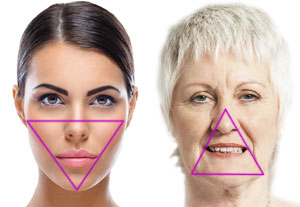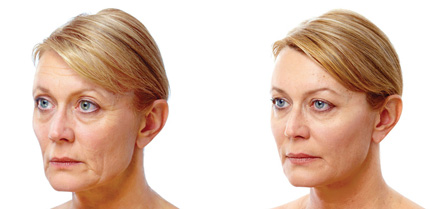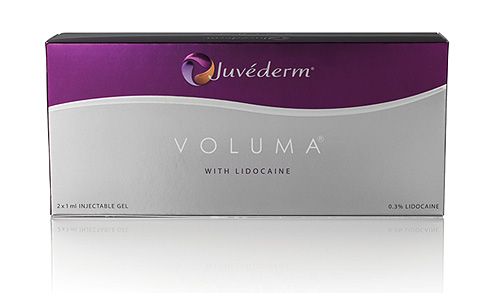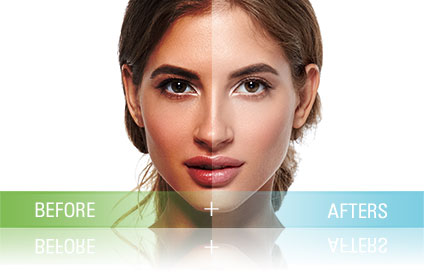Whether you want to fade fine lines, get rid of flaky patches, or just up your overall glow, these six procedures can help. From anti-wrinkle procedures to skin-sloughing treatments, here are six ways to keep your skin smooth starting this New Year.
1. Start with something basic, like moisturizer. Some moisturizers are not very moisturizing. A lotion may smell good and look nice, but if you can’t tell you put it on five minutes after you put it on, it’s not doing much. Dr. Annie Chiu recommends switching to heavier, thicker products that contain humectants, which attract moisture to skin, when the weather gets colder. One of our favorite’s at The Derm Institute is, SkinMedica’s Dermal Repair, it works like a multi-vitamin for the skin by using nourishing ingredients to support the skin’s barrier and improve signs of dry aging skin. SkinMedica’s Dermal Repair Cream offers intense skin hydration and helps replenish firmness and moisture.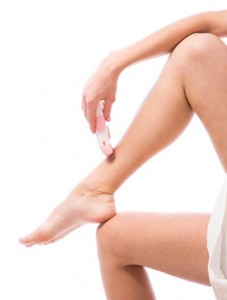
2. Shaving. In the morning: Many women shave their legs with regular bar soap. But soap plus the calcium in hard water forms a gummy coating and makes skin drier than soap alone. Use a body wash, a soap alternative. *The Derm Institute Tip: Shave every day to every other day, with a body wash or shaving cream, with warm not hot water. A razor removes the protective top layers of your skin, along with hair. When you do de-fuzz, choose a four-blade razor — it offers the closest shave, allowing you to use a gentle hand, which preserves natural moisture — and opt for a hydrating shaving cream, not gel.
3. Chemical Peels, a common cosmetic procedure, works by removing your skin’s outer layer by exfoliating the skin and removing dead cells on the surface. Dr. Chiu’s Physicians Blends allows you to enhance exfoliation to promote a healthy, more radiant layer of skin while boosting collagen production. Most peels can be used on any part of the body, the most popular being the face, neck, décolleté, arms and hands.
4. Intense Pulsed Light (IPL) Photofacial to address any brown spots or broken blood vessels. Dr. Chiu’s IPL Photofacial utilizes Intense Pulsed Light for a gentle treatment that is safe, painless, and requires no significant recovery time. IPL sends light through the skin to target the undesirable tissue, and leaves the surrounding tissue unharmed. The process is gradual and, collagen production is stimulated, rejuvenating the skin, shrinking pores, and giving the skin an overall glow. After about 5 days of very minimal “beauty downtime”, this procedure will reveal new glowing skin with improved texture, pores and decreased wrinkles. The result is healthier, younger looking skin.
5. Photodynamic Therapy. The Derm Institute uses a LED (light-emitting diode) that 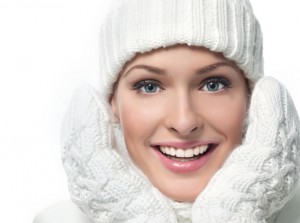
6. If you’re not wearing sunscreen: Start now. It won’t get rid of the lines you have, but it will prevent new ones from forming. Begin using a prescription retinoid cream nightly; Dr. Chiu often recommends Renova because patients find it less drying than other formulas. You’ll notice lines softening in two to three months.
If you want to be more aggressive, you could try Botox, a favorite here at The Derm Institute. Botox is a botulinum toxin that blocks the nerve impulses that cause muscle activity—and expression lines. Dr. Chiu can inject it around the eyes, between the brows, across the forehead; the lines in those areas then fade away over about a week. Fine lines are generally about 20 percent genetic and 80 percent environmental (in other words, brought on by the sun and smoking). They usually occur in the most expressive areas of your face—like around the eyes and forehead.
. . . Shared by Dr. Chiu and The Derm Institute Team

